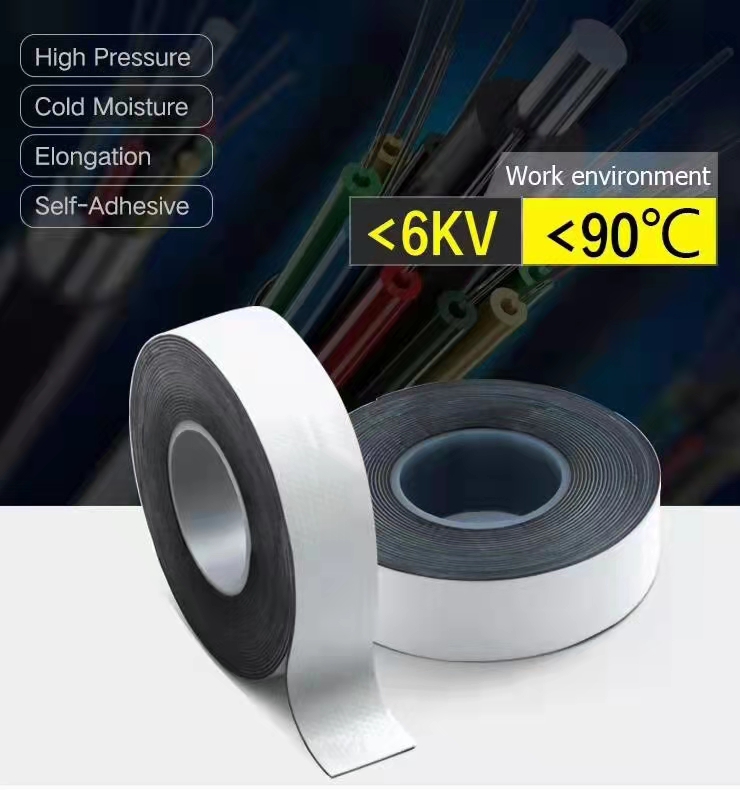Understanding Butyl Rubber Sealant Tape Properties and Applications
Butyl rubber sealant tape is a versatile adhesive product that has gained popularity in various industries due to its unique properties and performance capabilities. Composed primarily of butyl rubber—a synthetic rubber known for its excellent sealing characteristics—this tape offers a reliable means of creating tight seals in a variety of applications. In this article, we will explore the properties, benefits, and common applications of butyl rubber sealant tape.
Properties of Butyl Rubber Sealant Tape
One of the most significant attributes of butyl rubber is its superior elasticity and flexibility. This flexibility allows it to conform to irregular surfaces, making it an excellent choice for sealing gaps or joints. Butyl rubber also boasts excellent weather resistance, making it impervious to moisture, UV rays, and extreme temperatures. Additionally, it has inherent adhesive properties, allowing for easy application and strong bonding with materials such as metal, glass, wood, and many plastics.
Butyl rubber sealant tape is typically designed to be non-curing, meaning it remains flexible over time, providing a long-lasting seal without the risk of cracking or hardening, which can be common with other sealants. Moreover, its resistance to chemicals and solvents makes it suitable for use in environments where exposure to harsh substances is likely.
Benefits of Using Butyl Rubber Sealant Tape
The primary advantage of using butyl rubber sealant tape is its ease of application. Unlike liquid sealants that may require additional tools and drying time, butyl tape can simply be cut to length and pressed into place, allowing users to create an effective seal quickly and efficiently. This saves both time and labor, making it an ideal choice for both professionals and DIY enthusiasts.
Another benefit is its versatility. Butyl rubber sealant tape can be employed in a wide range of applications, including roofing, window installation, automotive repair, plumbing, and HVAC systems. Its ability to adhere to various surfaces gives it an edge in diverse settings, from residential builds to commercial and industrial projects.
butyl rubber sealant tape

Additionally, butyl rubber's long-lasting performance reduces the need for frequent maintenance or replacements, ultimately saving costs over time. Its durability ensures that once applied, the seal remains intact, providing peace of mind for those who rely on its effectiveness.
Common Applications
One of the most common applications for butyl rubber sealant tape is in roofing. It is often used for sealing roof seams, vents, and other protrusions to prevent water leakage. Its weather-resistant properties allow it to withstand harsh conditions, ensuring longevity and reliability.
In the automotive industry, butyl tape is utilized for sealing windshields, doors, and other areas where a watertight seal is essential. Its flexibility allows it to absorb vibrations, contributing to a quieter ride and reducing the risk of damage to the vehicle's structure.
Building and construction professionals also use butyl rubber sealant tape for window installation, helping to secure frames and prevent drafts or moisture infiltration. Its effectiveness in HVAC systems for sealing ductwork is another critical application, ensuring energy efficiency by minimizing air leaks.
Conclusion
In conclusion, butyl rubber sealant tape is a highly effective sealing solution with numerous advantages in application. Its unique properties make it suitable for a wide array of uses across various industries. Whether in roofing, automotive, or construction, butyl rubber sealant tape stands out as a reliable choice for achieving tight seals and ensuring long-term performance. As technology and materials continue to advance, the utilities of butyl rubber sealant tape will likely expand, further cementing its status as an essential tool in many fields.
-
XIANGFAN Rubber Tape-Ultimate Solutions for All Your Insulation NeedsNewsJun.24,2025
-
XIANGFAN Rubber Tape-Protection for Industrial and Residential ApplicationsNewsJun.24,2025
-
XIANGFAN Rubber Tape: Superior Safety and Sealing for Demanding EnvironmentsNewsJun.24,2025
-
XIANGFAN Rubber Tape: Reliable Solutions for Every Electrical ChallengeNewsJun.24,2025
-
XIANGFAN Electrical & Industrial Tape: Powering Reliability Across IndustriesNewsJun.24,2025
-
XIANGFAN Electrical & Industrial Tape: Excellence in Every ApplicationNewsJun.24,2025
